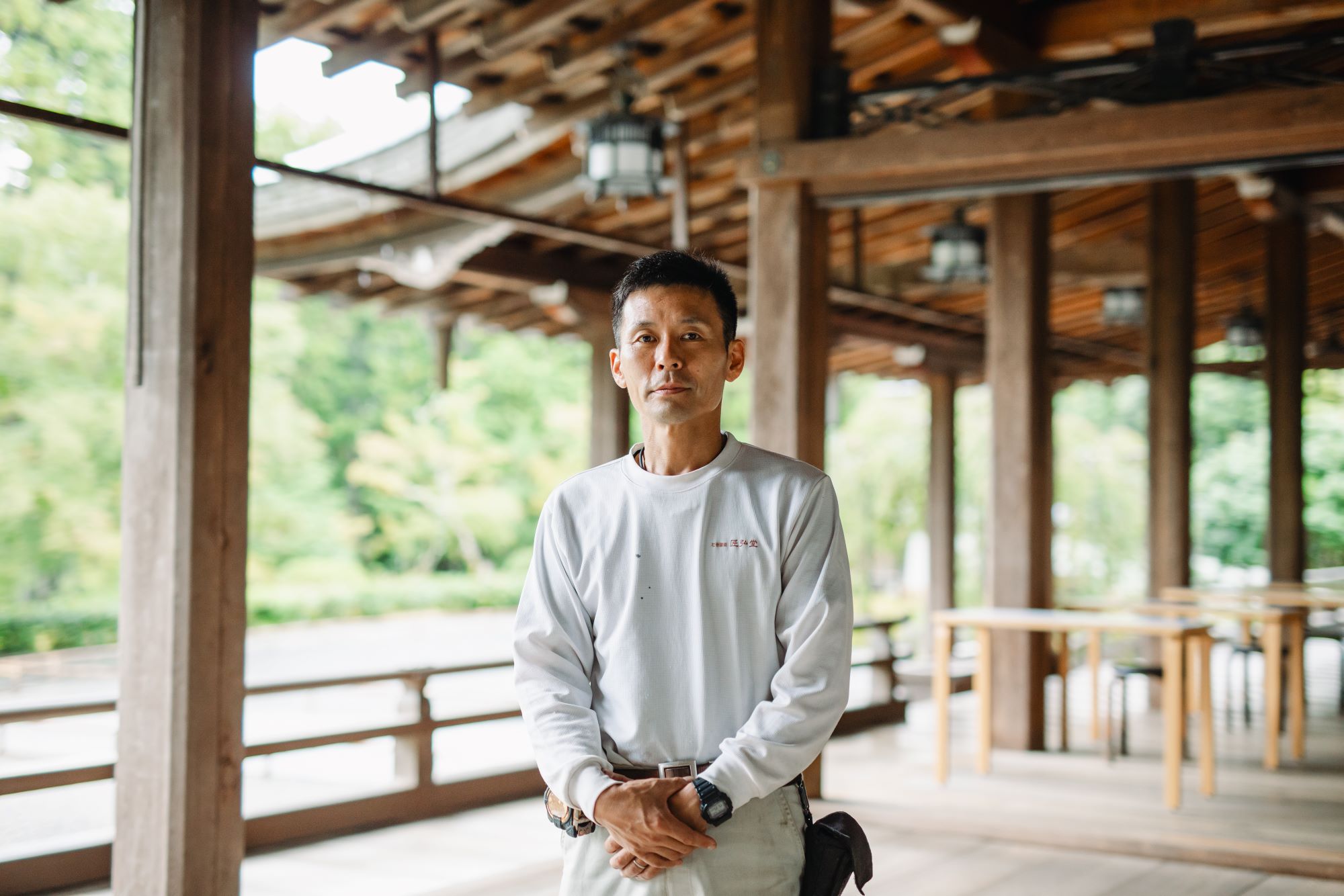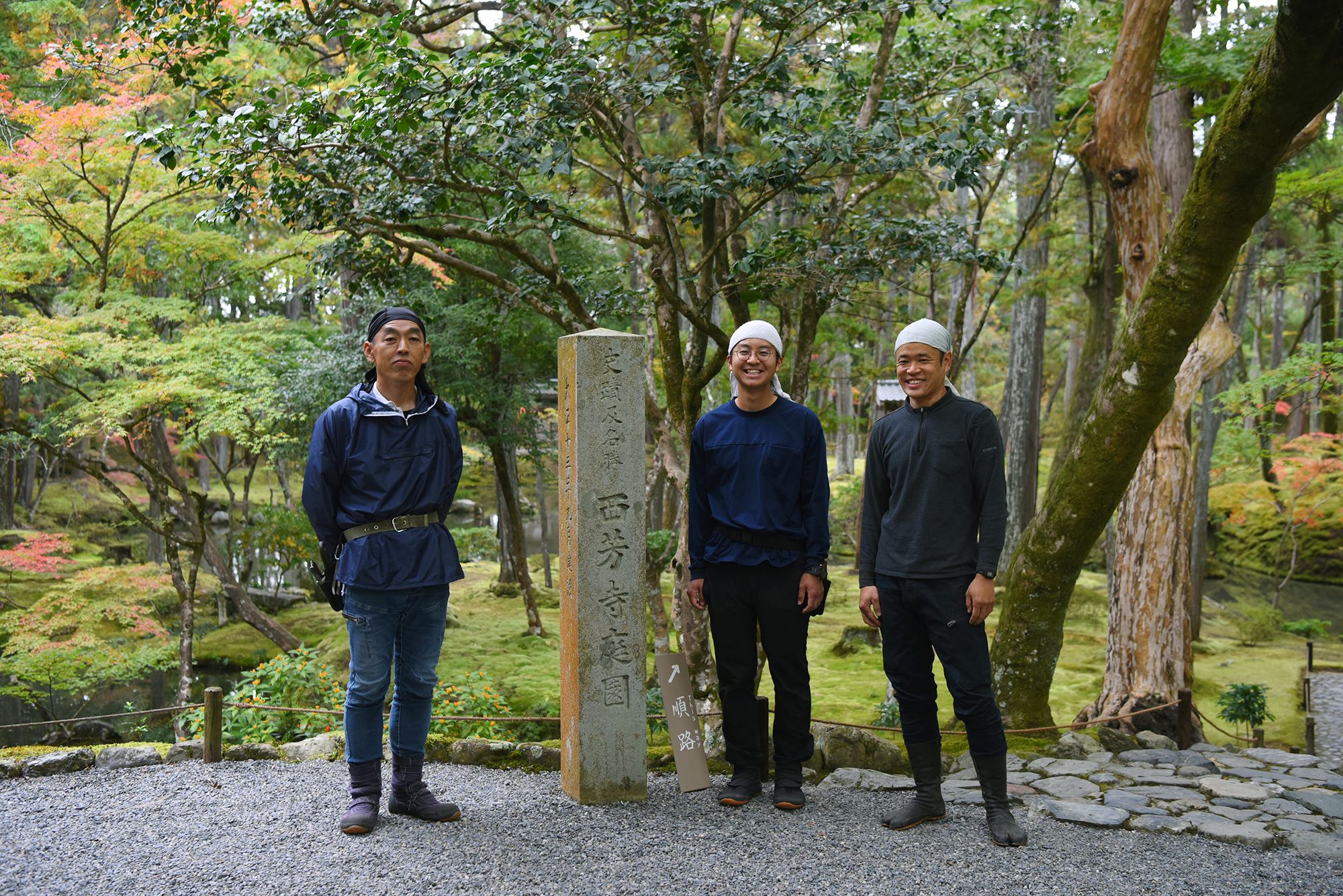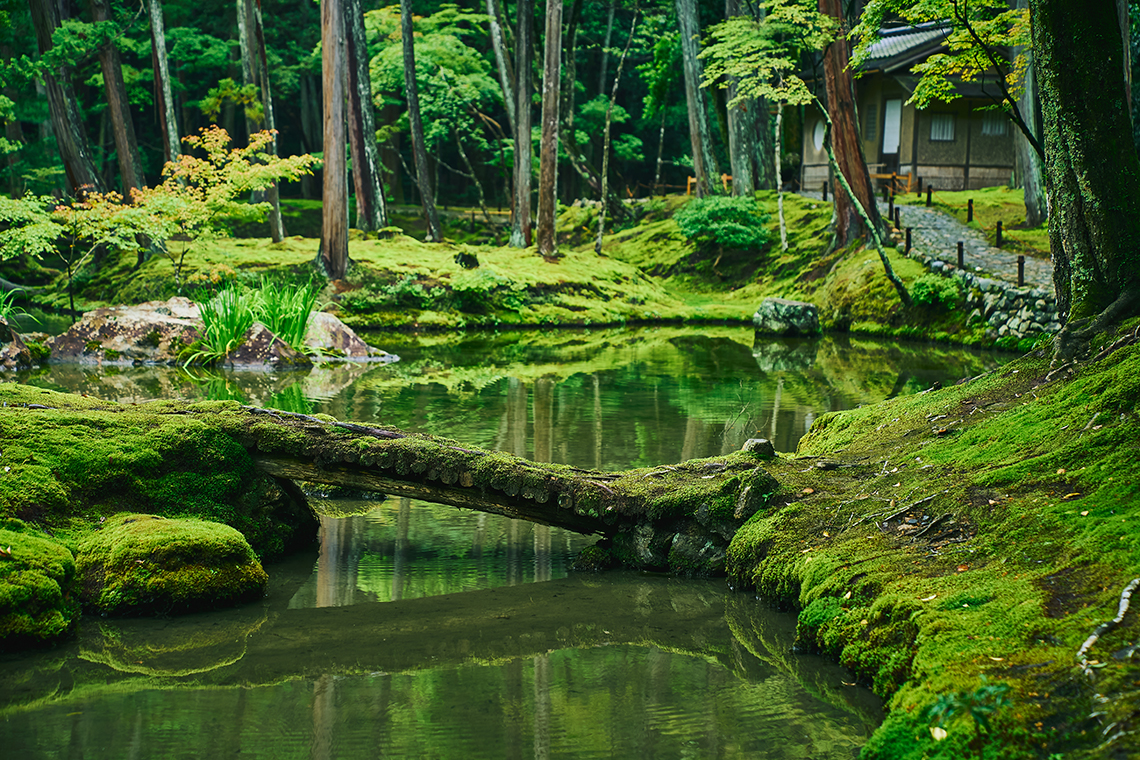2023.12.21
People Preserving Saihoji for Future Generations “Gardeners”
Enjoying Change and Living with the Garden:
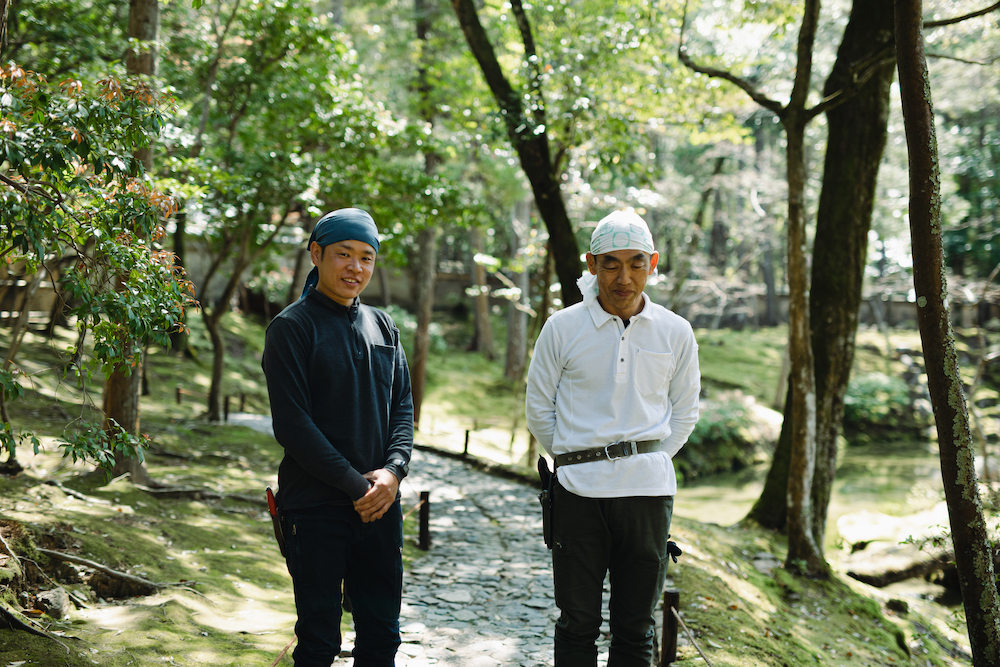
Saihoji Temple is known worldwide for its “Moss Garden.” In order to welcome visitors each day, many people support the temple and its garden with their expert work. In this series, we spotlight the work of those involved in Saihoji, and we will explore what it means to support culture and connect to history.
This first installment focuses on the Saihoji’s gardener team. While many temples outsource garden maintenance to external gardeners, Saihoji has employed its own dedicated gardeners to form an internal gardener team for more than half a century. They inspect the garden and temple grounds every day, maintaining them to ensure that they are kept in the best possible condition to welcome visitors on any given day. In this article, we asked Miyazaki Koji of the gardener team what he has learned and noticed through his work.
Miyazaki Koji
Originally from Kobe City in Hyogo Prefecture, Miyazaki joined a landscaping company and gained experience maintaining parks and taking care of roadside trees before joining Saihoji’s gaerdener team in 2015. Though he mainly focuses on broom work for the moss, he handles all aspects of garden maintenance, including taking care of plants and making bamboo fences.
Posing questions to myself while working, day in and day out
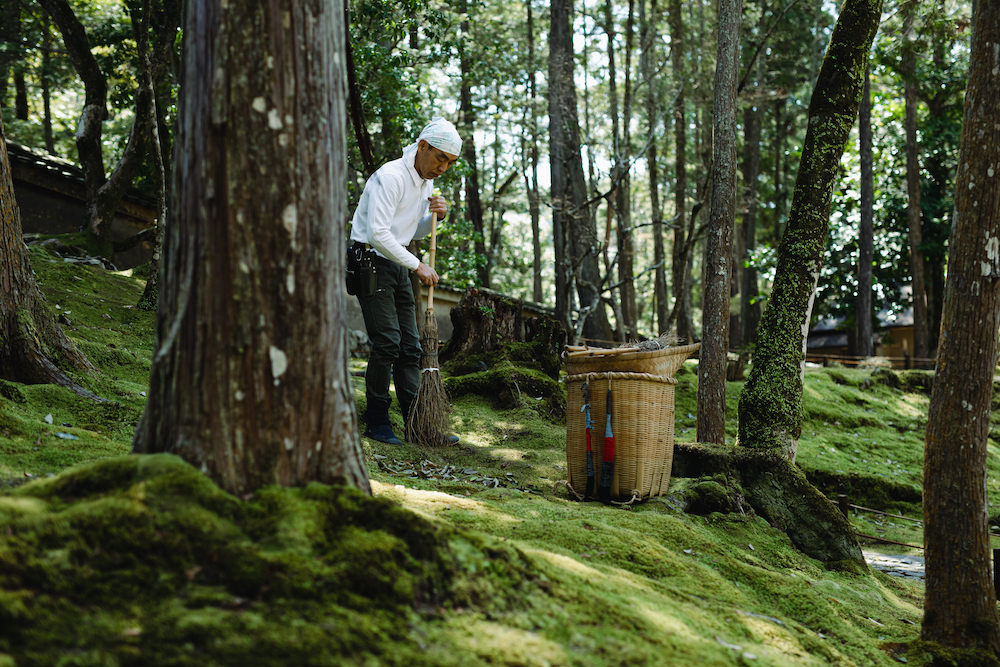
ーMr. Miyazaki, please tell us how you became a member of the gardener team at Saihoji.
I used to work in landscaping in public green spaces, maintaining parks and roadside trees. I had been thinking that I wanted to face nature from a slightly different angle, and by coincidence I happened to find this job ad in the newspaper, so I applied. I started working here in 2015, making this my ninth year. (as of the time of the interview in April 2023)
ーA common theme in your previous and current jobs is that they are both related to nature, but are there any differences?
The approach for work is completely different. In my previous job, budgets and schedules were clearly defined, and it was important to work toward deadlines as efficiently as possible. However, at Saihoji, we have to figure everything out on our own. Instead of rushing, I try to work carefully and in dialogue with the garden and nature, repeatedly asking questions of myself—and answering them—on a daily basis.
ーWhat kind of work do you do each day as part of the gardener team?
We start the day with a morning walk around the entire garden. Looking around the temple grounds every day allows us to sense the changes that occur from day to day, and we decide what needs to be done on any particular day.
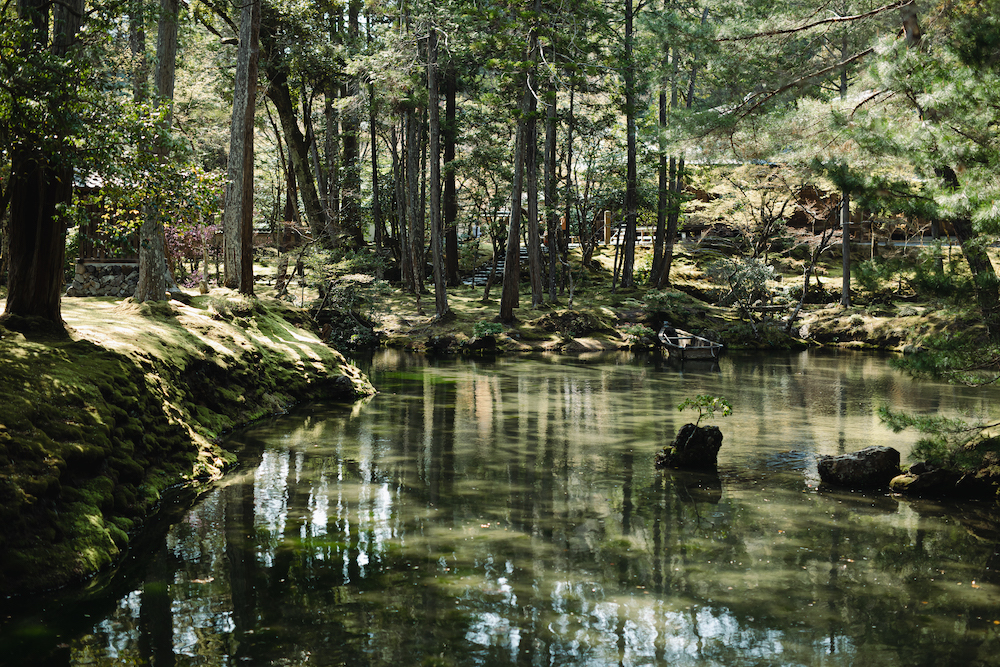
The key to taking care of moss is to create an environment with enough light and water. If we leave fallen leaves on the moss, the moss cannot gain enough sunlight and night dew, and during the hot summer, heat released from the ground will be trapped between the moss and the leaves.
On the other hand, during the winter months, we avoid broom work to allow the moss to rest, and we start caring for it again in March. The early spring is an important time for moss to store up energy for the entire year, so we watch for the right time to start our broom work and then try to do it all at once.
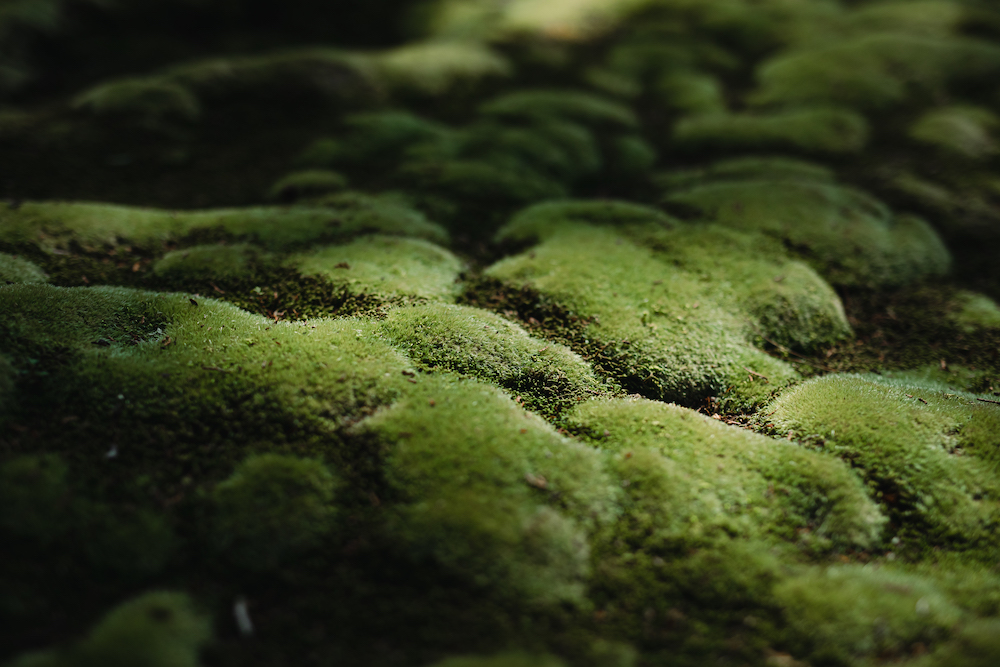
In addition to sweeping around the moss, we also maintain the entire garden. In the summer and fall, we take care of the plants and clean the ponds in addition to removing weeds.
ーWe see that the brooms you use are made of bamboo. Is there anything you pay particular attention to with your tools or work?
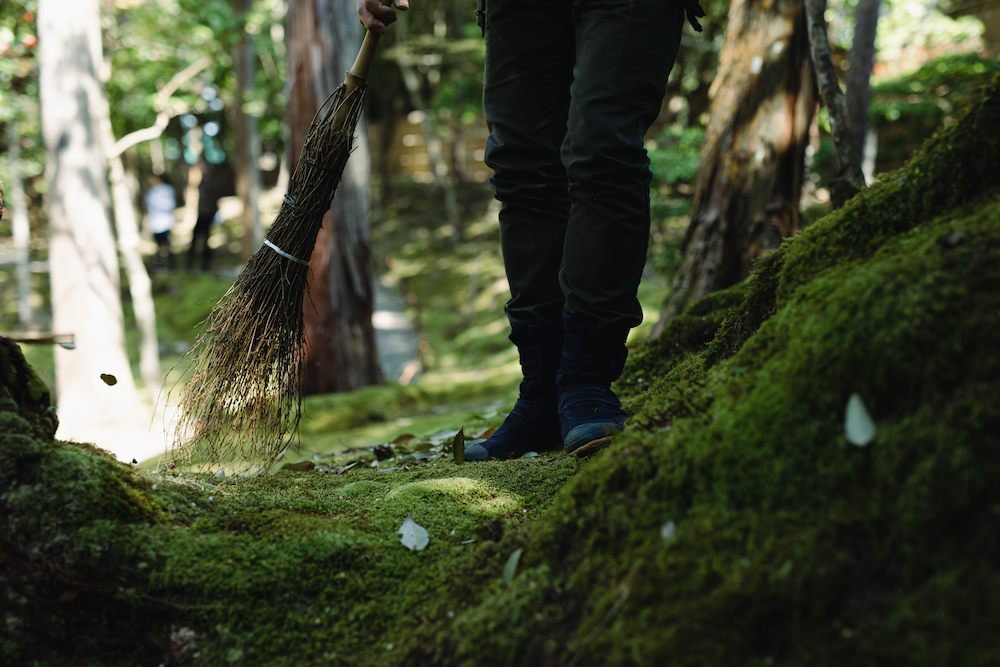
We use three types of bamboo brooms, primarily varying in the level of stiffness. The way we sweep also differs from broom to broom. When sweeping, you want it to feel like you’re simply catching the fallen leaves. If you sweep too hard, you will peel off the moss. You don’t need to use much force. It is said that there are about 120 varieties of moss. We believe that the best way to take care of each of these varieties is to use the old-fashioned bamboo brooms, rather than leaf blowers. This is because broom work is not only about sweeping, but also about being mindful of the moss and other living things in the area.
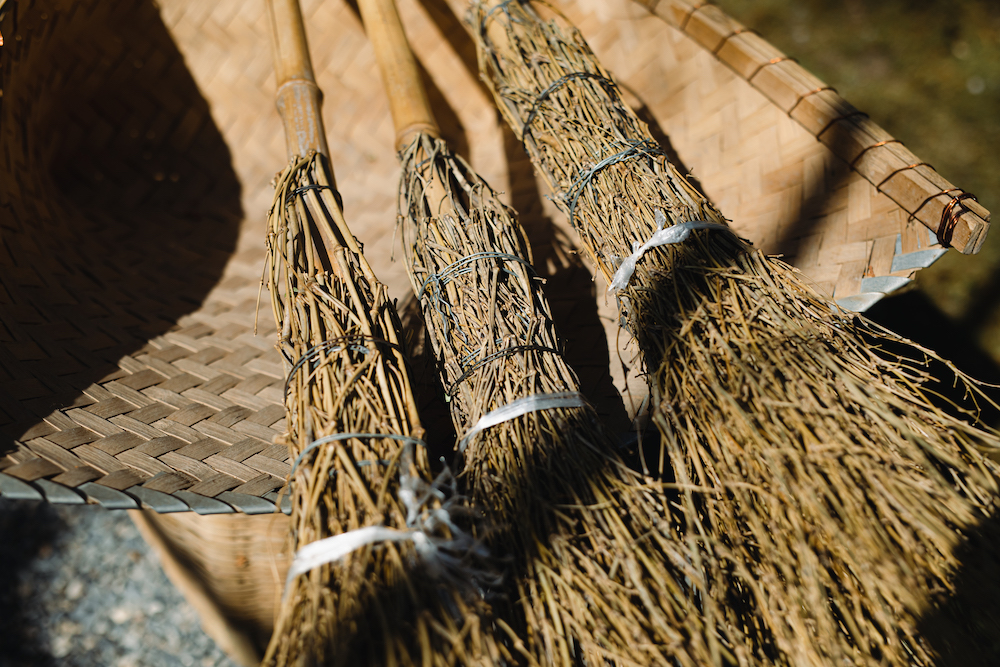
We also make the brooms ourselves, using bamboo from the temple grounds. We cut the bamboo, remove the branches, and dry it before we can make our brooms. We get a sense of attachment to the tools we’ve made, and above all, we believe that a good job starts with taking good care of our tools.
Against nature, resistance is futile
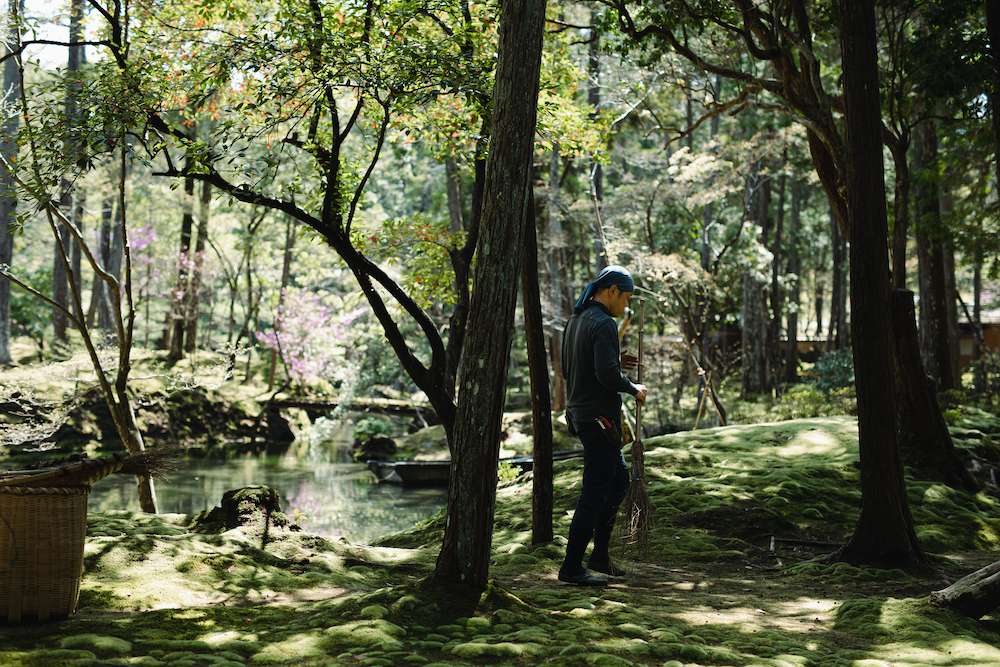
ーWhen you work with nature, does it often happen that things don’t go as planned?
Yes, totally. For example, if we try to clean the garden on a rainy day, we will not be able to sweep away the leaves with a broom, because they get wet and stick to the moss. Using extra force is hard on both the moss and our own body, so on those days, we try to keep maintenance work to a minimum, focusing on things like maintaining the garden paths, keeping our tools in good shape, and putting together cleaning plans.
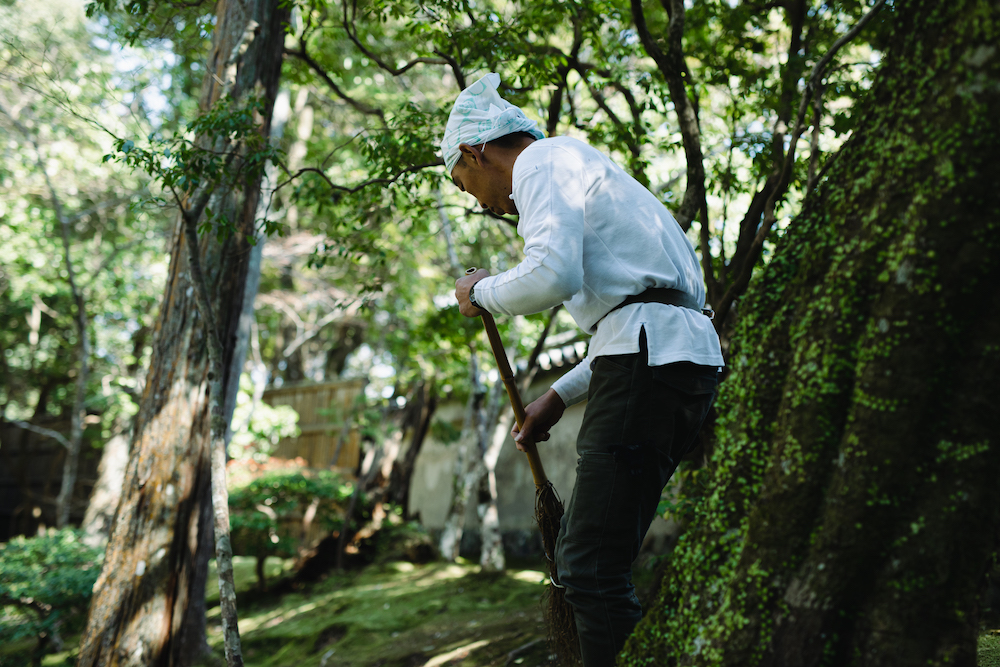
In the past, the garden has been severely damaged by typhoons and animals such as wild boar. When the moss has been roughed up, we do our best to restore it again as soon as possible. If you leave the moss roughed up, it will wither and die, but if it’s in contact with the ground, it will replenish its moisture and the different mosses will intertwine with each other and grow back to normal. The moment when we see that happening, we truly get a feel for the life force of moss.
We cannot and do not resist nature. There’s no point in getting frustrated over something that can’t be helped. We try to prepare ourselves by choosing low impact work appropriate for the season and weather.
ーIs there anything that you keep in mind to face nature, as it changes day by day?
We try to understand that nature is itself a living organism. We also avoid aiming for perfection.
There was a time when I was so concerned about what the visitors would think when they saw the garden, that I would get the brooms and start sweeping as soon as a few leaves fell on the ground. However, overdoing it will of course damage the moss. No matter how perfectly you sweep the garden, leaves will fall overnight, and everything will soon be just like it was before.

Besides, wouldn’t it seem a bit unnatural to have a garden without a single fallen leaf? We also avoid sweeping immediately so that the visitors can get a sense of each season. The garden at Saihoji is not only home to moss, but also a variety of blossoming flowers and trees, so we hope that visitors can enjoy nature here in each season.
The present is the middle ground between the past and the future
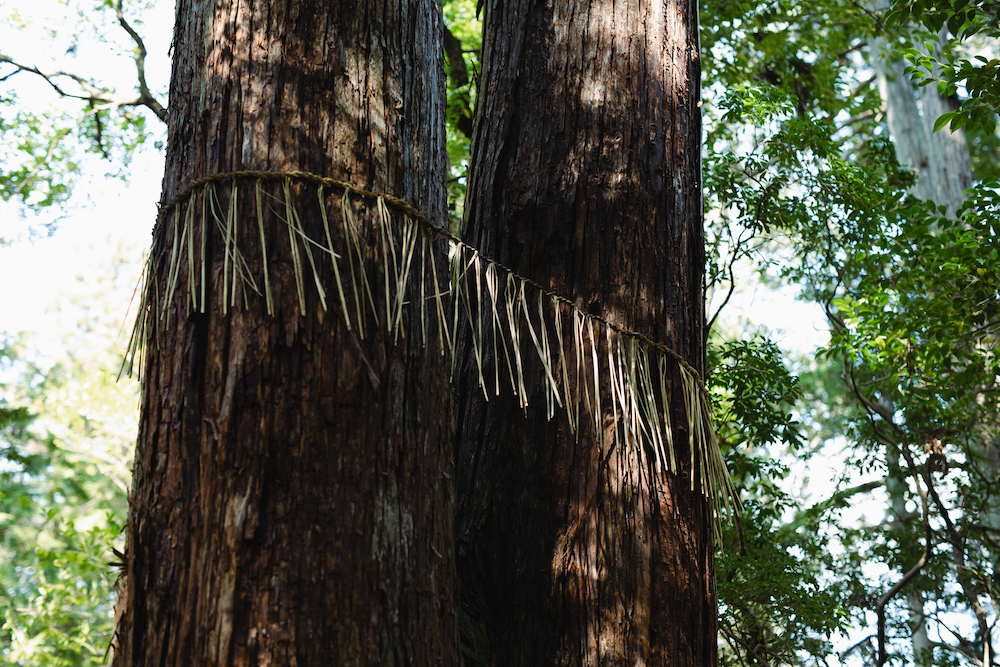
ーHow have you cultivated this work ethic?
For many years, we have placed great emphasis on maintaining the Saihoji garden with our own hands. The methods of broom work continue to change, and I believe that the process has nurtured our hearts.
When I first came to work at Saihoji, a chief priest pointed out to me that I was being too rough with the broom. This was of course completely unintentional on my part, but I think that my impatience to clean up the garden as quickly as possible—since it was such a big garden—came through in my physical movements.

Soon after I started working here, the senior member of the gardener team retired, so I was only able to work with him for one year. My sweeping style is therefore based partly on what I learned from him, but modified through trial and error in my own way. If I could meet him again, I would like to ask him what he thinks.
ーYou mentioned doing a lot of trial and error, but could you tell us what lessons you have learned through your work?
At Saihoji, all of the temple’s staff members gather together to practice zazen about once a month. This led me to think about the connections between Zen and my work.
We learned the fundamentals of Zen during these sessions: choshin (regulating one’s body), Chosoku (regulating one’s breathing), and Choshin (regulating one’s mind). I have noticed that when I feel good while doing my broom work, it is because my posture and breathing are well-ordered and my field of vision is wide open. Conversely, when my mind is disturbed, there is an immediate negative impact on both my attitude to work and the results. When I sweep my broom over the moss, I feel that it is important to be aware not only of the fallen leaves on the surface, but also of my inner self.
ーWhat is the garden of Saihoji to you?
For me, the garden is a place of awareness.
I learned the term hogejaku during the zazen sessions. It refers to the idea of ridding oneself of assumptions and attachments. Looking back now, I sometimes want to scold my past self for focusing so much on efficiency. I want to say to myself, “You are working with nature and living organisms. What’s the rush?” The reason I am able to feel this way is because I could let go of my past thoughts. I have been working with nature for many years now, and I think it is because of my work at Saihoji that I have come to this realization.
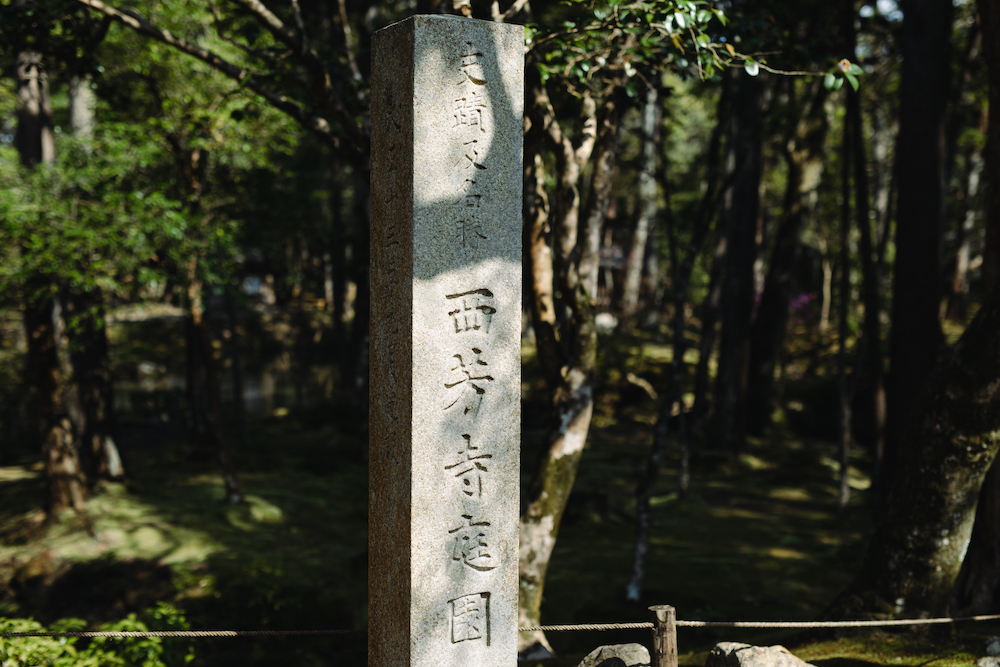
ーAs a final question, what do you think is important for passing the garden of Saihoji on to future generations?
I believe that it is to do the best that is required in each period. What we do here from day to day is maintenance. We stand at the midway point between the past and the future so that we can pass the garden on to the next generation.
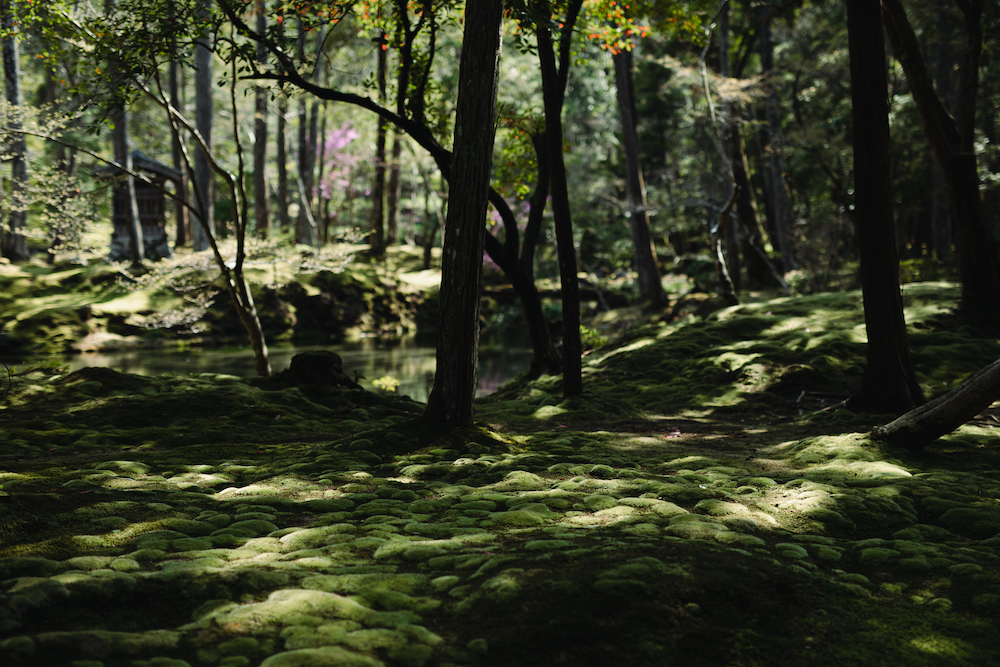
And even if you arrive at a moment where you can say, “This is perfect,” that perfection is only temporary. After you notice something new, the time will come when you need to abandon your current ways of doing and thinking. That moment may come in five or ten years from now. Or it could come tomorrow. I hope to enjoy the changes that occur from day to day and devote myself to the work of the gardener team so that we can pay homage to the innumerable ancestors who have preserved this garden through the ages until they came to us. And then, I hope to pass them on to the future.
Edited by: MIYAUCHI Toshiki, TAWARAYA Ryusuke
Written by: OGURO Keitaro
Photographed by: SHINSHI Misa
*These photos were with permission.
Up next
Most read
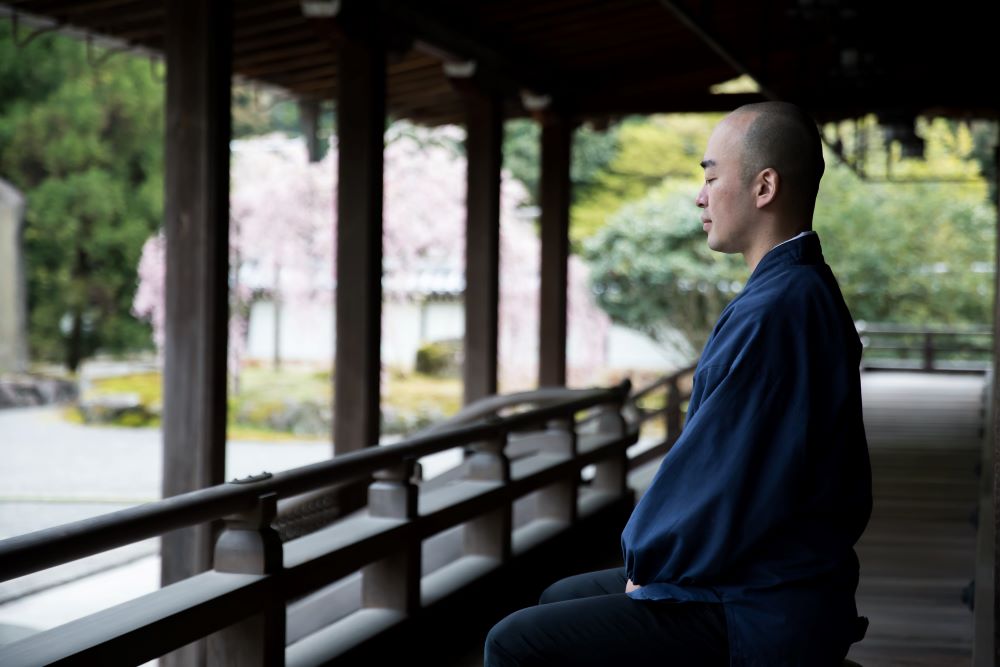
Your Heart
“The Concept of Muda”


